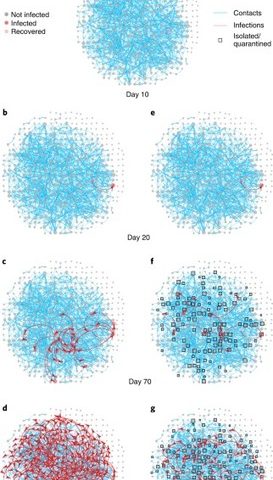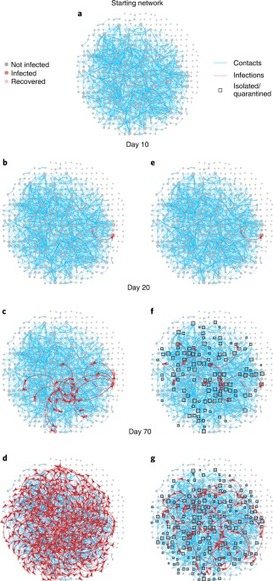Using a real-world network to model localized COVID-19 control strategies #esante #hcsmeufr #digitalhealth #Coronavirus #covid-19 #COVID19FR #coronavirusfrance

3D printing communities rise to meet Covid-19 challenges #esante #hcsmeufr #digitalhealth #Coronavirus #covid-19 #COVID19FR #coronavirusfrance
14/08/2020
Contact-COVID et SI-DEP, les outils numériques du dépistage COVID-19 #esante #hcsmeufr #digitalhealth #Coronavirus #covid-19 #COVID19FR #coronavirusfrance
14/08/2020Case isolation and contact tracing can contribute to the control of COVID-19 outbreaks1,2. However, it remains unclear how real-world social networks could influence the effectiveness and efficiency of such approaches. To address this issue, we simulated control strategies for SARS-CoV-2 transmission in a real-world social network generated from high-resolution GPS data that were gathered in the course of a citizen-science experiment3,4. We found that tracing the contacts of contacts reduced the size of simulated outbreaks more than tracing of only contacts, but this strategy also resulted in almost half of the local population being quarantined at a single point in time. Testing and releasing non-infectious individuals from quarantine led to increases in outbreak size, suggesting that contact tracing and quarantine might be most effective as a ‘local lockdown’ strategy when contact rates are high. Finally, we estimated that combining physical distancing with contact tracing could enable epidemic control while reducing the number of quarantined individuals. Our findings suggest that targeted tracing and quarantine strategies would be most efficient when combined with other control measures such as physical distancing. Combining fine-scale social contact data with epidemic modeling reveals interactions among contact tracing, quarantine, testing and physical distancing for controlling COVID-19.
Source: www.nature.com




